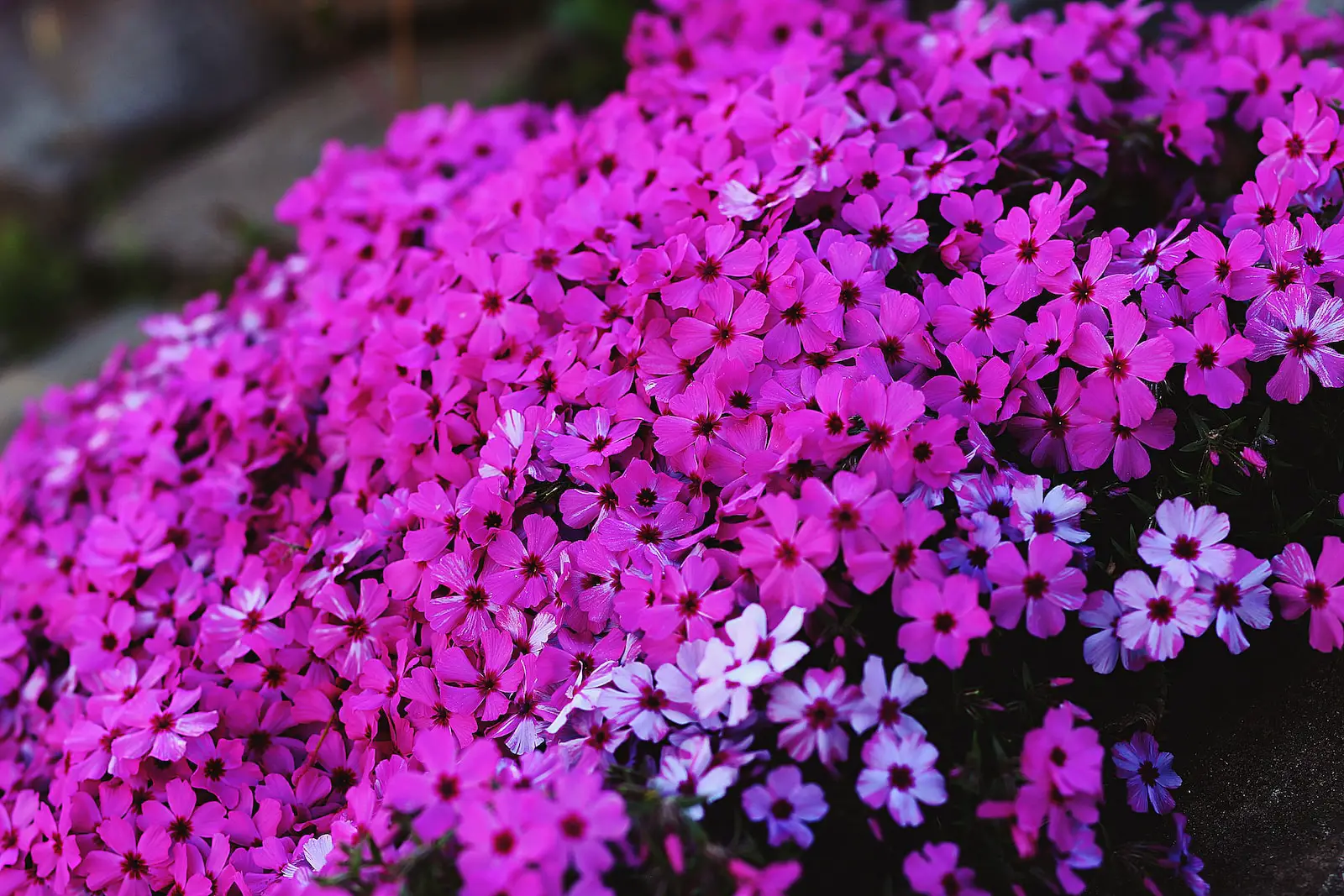Creeping Phlox, a low-growing, spreading plant, forms a colorful carpet that is in full display in the spring. With its vibrant blooms that form dense, mat-like coverings, it has become a beloved addition to rock gardens, borders, and woodland scenes.
Native to North America, Creeping Phlox is a hardy perennial that offers a variety of colors, from shades of pink and purple to white. Its needle-like foliage remains evergreen in many climates, making it an attractive ground cover throughout the year.
The popularity of Creeping Phlox stems from its ease of care, delightful appearance, and ability to attract butterflies. Gardeners who wish to add this charming plant to their landscapes can find success with some basic knowledge of its preferences and needs.
| Attribute | Details |
|---|---|
| Common Names | Creeping Phlox, Moss Phlox |
| Botanical Name | Phlox subulata |
| Family | Polemoniaceae |
| Plant Type | Perennial |
| Mature Size | 4-6 inches tall, 2 feet wide |
| Sun Exposure | Full Sun |
| Soil Type | Well-Drained, Sandy Soil |
| Hardiness Zones | 3-9 |
| Native Area | North America |
Creeping Phlox Care
Creeping Phlox is appreciated by gardeners for its low maintenance requirements. Thriving in full sun and well-drained soil, it’s perfect for rock gardens or areas with poor soil where many other plants might struggle.
Though it is drought-tolerant once established, regular watering during the first growing season will help the plant establish a deep, healthy root system. Its ability to suppress weeds, coupled with the need for minimal pruning, makes it an attractive option for gardeners seeking a beautiful but low-maintenance plant.
Light Requirement for Creeping Phlox
Creeping Phlox requires full sun to bloom profusely. It will tolerate some shade, especially in hot climates, but too much shade can lead to sparse blooming and leggy growth.
Soil Requirements for Creeping Phlox
Well-drained, sandy soil with a slightly alkaline pH is ideal for Creeping Phlox. It is tolerant of poor soil but adding organic matter or compost can enhance the soil’s fertility, promoting healthier growth.
Water Requirements for Creeping Phlox
Watering Creeping Phlox regularly during the first growing season is essential for establishing a strong root system. Once established, it becomes quite drought-tolerant, only needing water during prolonged dry spells.
Temperature and Humidity
Creeping Phlox is hardy and can tolerate a wide range of temperatures. It can survive cold winters, thriving in USDA zones 3-9. Humidity is generally not an issue for this resilient plant.
Fertilizer
Feed Creeping Phlox with a balanced fertilizer in the early spring just before new growth begins. A slow-release granular fertilizer works well.
Pruning Creeping Phlox
Minimal pruning is needed for Creeping Phlox. After the blooming period, lightly shear the plants to encourage a denser growth and possibly a slight rebloom.
Propagating Creeping Phlox
Creeping Phlox is easily propagated through division in the early spring or just after blooming in the summer. Divide the clumps into smaller sections and replant them.
How To Grow Creeping Phlox From Seed
Growing Creeping Phlox from seed can be a rewarding endeavor. Sow the seeds in the fall or early spring in well-drained soil and provide consistent moisture until germination.
Common Pests & Plant Diseases
Spider Mites
Spider mites can affect Creeping Phlox, especially in hot, dry conditions. Regular watering and proper spacing can help prevent this problem.
Powdery Mildew
This fungal disease can occur if the plant is situated in too much shade or in an area with poor air circulation.
Common Problems With Creeping Phlox
Poor Blooming
Inadequate sunlight is usually the cause of poor blooming. Ensuring full sun exposure will usually correct this issue.
Leggy Growth
This can result from too much shade or overly rich soil. Adjusting the location or soil conditions may be necessary.
Pro Tips
- Plant in full sun for best blooming.
- Ensure well-drained soil to prevent root rot.
- Water regularly during the first growing season.
- Apply balanced fertilizer in early spring.
- Lightly prune after blooming to encourage dense growth.
- Propagate through division for more plants.




